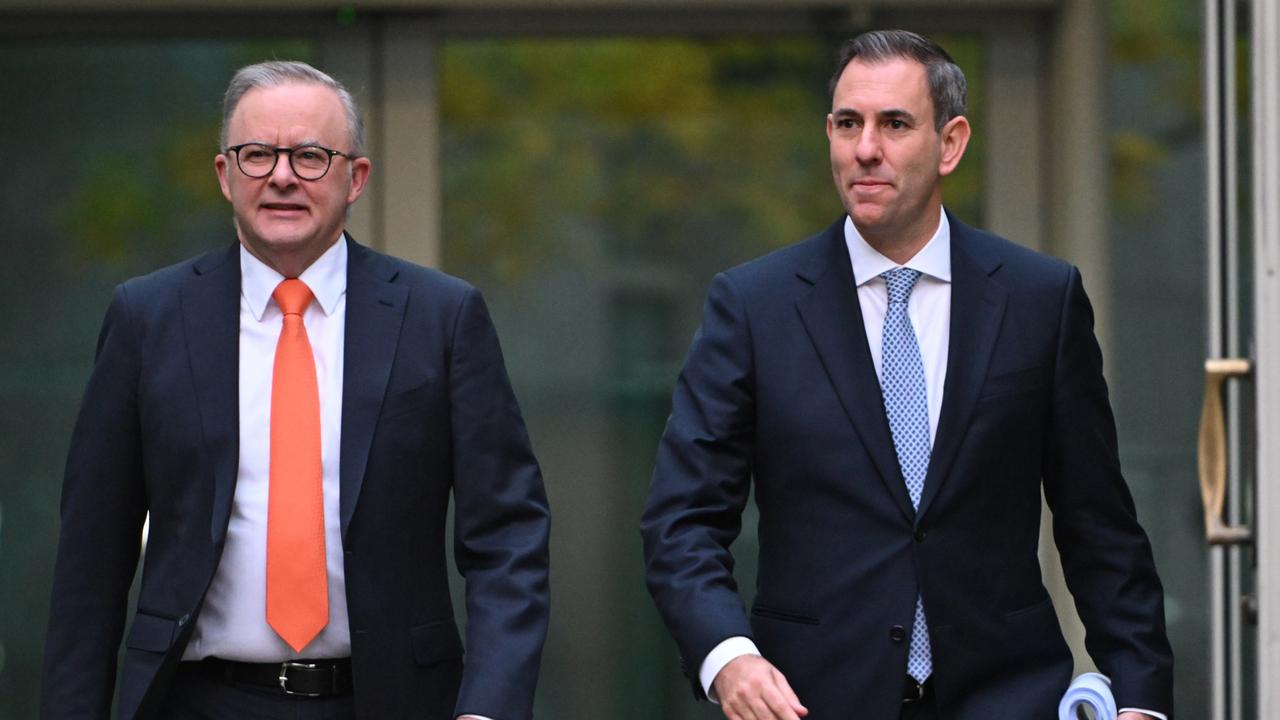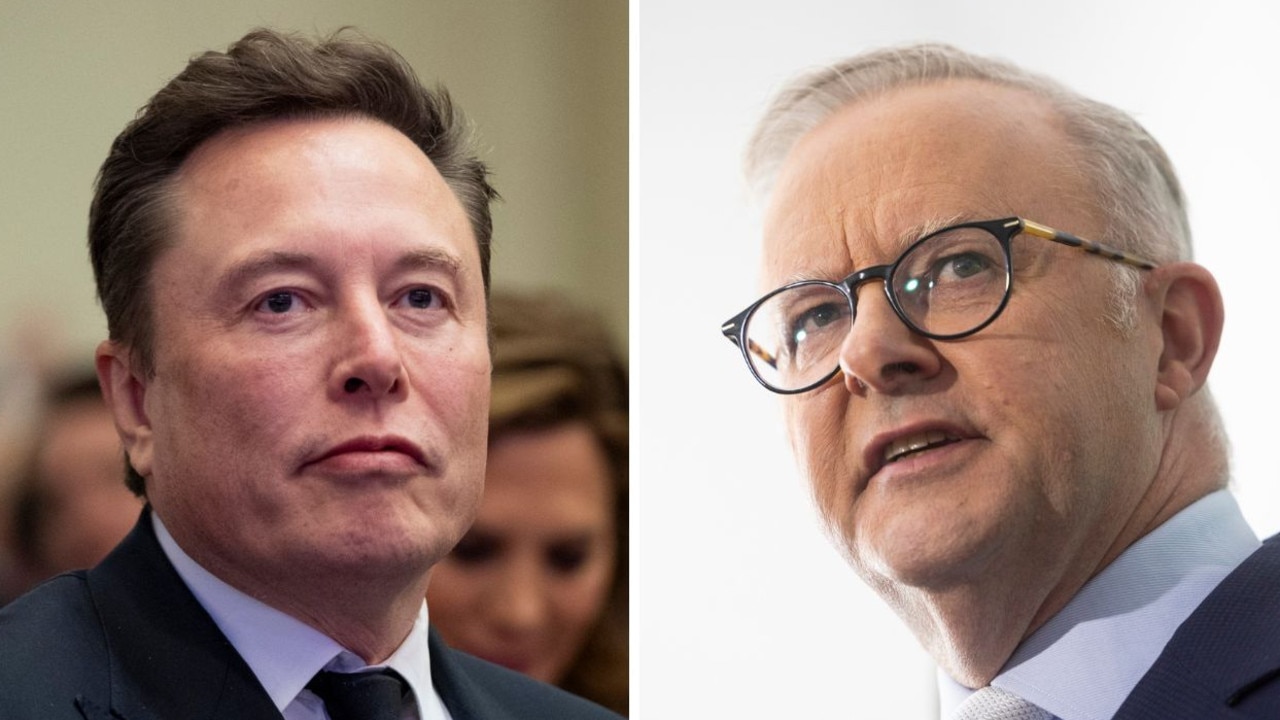Clive Palmer’s $60m Senate campaign looks shaky
He believes China built an airstrip in the Pilbara to invade Australia. He can’t pay his retrenched employees. But he has $60m to splash on a race for the Senate — and he may have little power to wield.
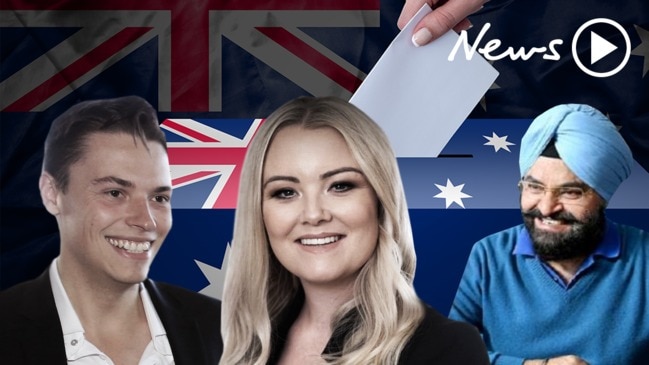
Analysis
Don't miss out on the headlines from Analysis. Followed categories will be added to My News.
The lights go on and Clive Palmer tiptoes to the venetians and peers into the gloom. Chinese spies snorkelling about the canals of his gated Sovereign Islands estate. Again.
It’s only as ludicrous as Palmer running prime-time election ads warning the Chinese have built a private airstrip in the Pilbara for a planned military takeover of Australia.
Some might pause to wonder at China’s choice of the Pilbara. It does not seem especially strategic to start a war in a largely vacant landscape.
Does Palmer genuinely believe this stuff or is he trying to steer people to the outermost reaches of their fears? Or is the risk to overthink the Gold Coast tycoon’s bluster? After all, Clive appears to put no thought into what he says. He rambles and moves on.
Questions as Clive jets to Fiji ahead of poll
Anning lashed for ‘political exploit’ of Muslim family
Howard's seething attack: 'This fella Shorten is after those people'

Like Donald Trump, Palmer is accountable for nothing left in his wake. Inconsistencies and fabrications are irrelevant when you’ve got a rhino’s hide. The only thing that matters is what you trample next.
That is why elderly investors in his Coolum resort, retrenched nickel workers and the federal government (who bailed out the workers) are still awaiting the millions they are owed from Palmer (despite him claiming to have made a $7 million payment into a trust account). Meanwhile, he is estimated to have paid upfront close to $60m painting the entire Australian media landscape yellow with United Australia Party electioneering.
How serious is Clive Palmer about his election campaign??
— Nirav Naik (@naik448) May 12, 2019
Having dinner @ Amalfi Italian Restaurant
Denarau Island, Nadi, Fiji pic.twitter.com/ptrOIFcUWc
But has Palmer this time reached too far? He is backing senate hopefuls in every state and territory and 150 candidates in the House of Reps — now down one after his Melbourne candidate, Tony Pecora, was dumped for propagating 9/11 conspiracy theories, which even for Palmer was too much.
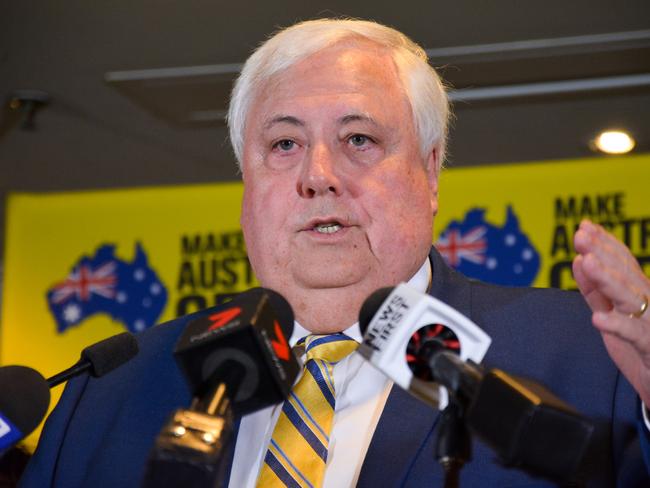
To put Palmer’s reported $60m in context, in 2016 the Trump campaign spent under seven times that amount at $398 million to win the United States presidency, presiding over 327 million people and achieving the most powerful office in the world.
Palmer has told morning television he will form government on Saturday, which he knows is absurd. One of his lower house candidates, who did not wish to be named because his assessment was too realistic, was asked if the UAP would win even one lower-house seat.
“I don’t think so,” he said.
“We will influence the outcome of the election and it won’t be good for the Liberal Party in the lower house. I think the preference deal has damaged them and damaged us a bit, that’s just my feeling.”
The candidate believes Palmer was foolish to lock in a nationwide preference deal with Scott Morrison and instead should have come to a preference “arrangement”.
“The Liberals were always going to preference us above Labor anyway,” he says. “And Palmer would never have preferenced Labor over the Liberals. There was no deal needed to get that to happen.
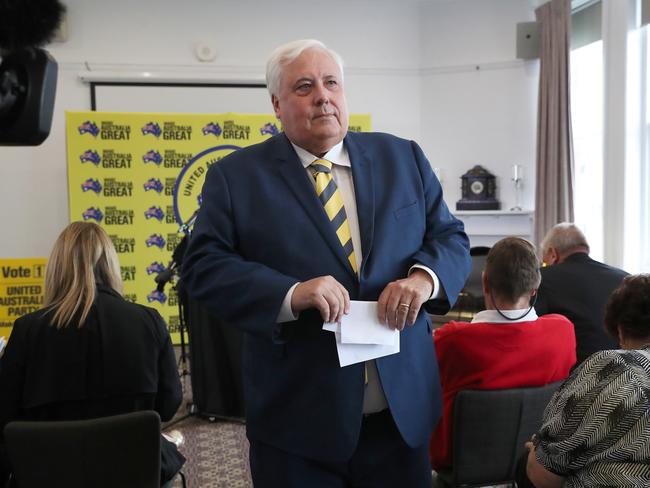
“We’ve gone and given the Libs our second preference, but Labor has been able to attack them by saying Clive hasn’t paid the Queensland workers.”
What this means is that Palmer has paid $60m for one likely Senate seat, being his own in Queensland. That is, if it’s accurate that Pauline Hanson’s One Nation has fallen into disfavour and will head to the lower echelons of the ballot papers.
The UAP’s only current serving parliamentarian, former One Nation Senator Brian Burston, is not expected to hold his seat in NSW.
Election analyst William Bowe, who publishes the Poll Bludger, said it was fair to say Palmer has spent a fortune taking himself into a lonely six-year political oblivion.
“At best he’s going to get one Senate seat and if you’re one vote on the crossbench, it’s not a priceless commodity but he’s behaving as it is,” said Bowe.
“I think it’s possible the Coalition can pick up some Senate seats and we will see fewer crossbenchers winning.”
All minor parties have suffered disillusion syndrome desertions: Palmer, Hanson and SA’s Centre Alliance, who have two senators but none standing none in this election.
The standing of the minors and independents in the Senate could be about to decline.

At the 2016 federal election, voters followed new laws instructing them to number each box 1 to 6 above the line for parties in the Senate, or to number at least 12 boxes below for individual candidates. No longer could they number “1” above the line and let their party choose their preferences for them.
William Bowe has explained that the previous system “proved open to manipulation from ‘preference harvesting’ by networks of small parties feeding each other’s preferences, producing results as arbitrary as Ricky Muir’s win for the Australian Motoring Enthusiasts Party in Victoria in 2013 from 0.5 per cent of the statewide vote”.
The changes supposedly suit the major parties and the Greens, however they did not harm the minors in 2016. Because it was a less common double dissolution, the quota required to win a senate seat fell from 14.3 per cent to 7.7 per cent, thus widening the net and landing a record crossbench.
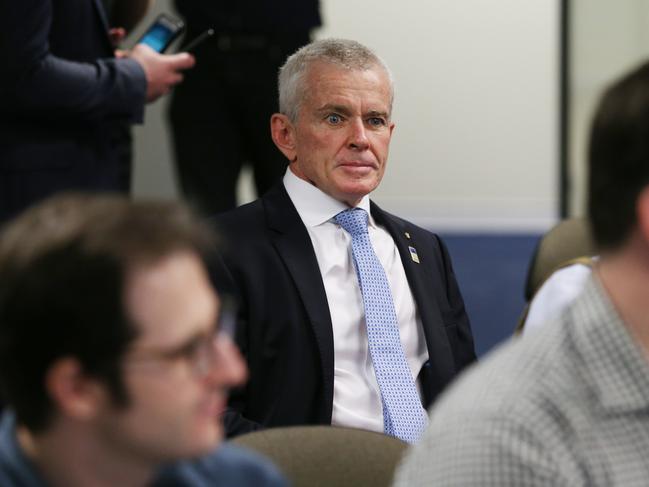
But 2019 is a half-Senate election and to gain one of the 36 six-year Senate spots (in reality 40, including two in each of the territories, who always sit three-year terms), the quota proportion is raised.
In an era of supposed disenfranchisement with major parties, this will be the first proper test as to how well they hold their own on polling day.
Smart observers are refraining from guessing how the Senate will look once the final votes are tallied, which could take weeks.
The Greens will remain the third party and will align with Labor, but Labor has occupied their ground on climate change and their support for a death tax could ping them on the chin, very hard.
The Senate has 76 seats. By favourable reckonings, Labor and the Greens could end up with between 33 to 36 seats, and occasionally but not always draw on the non-aligned Centre Alliance to lift them by two votes. In the Senate, 39 votes are needed for control.
On this reckoning, the left will not dominate except on extraordinary matters.
Minor parties will only do well if voters use their pencils wisely. Tasmanian psephologist Kevin Bonham advises on his site: “Whether you are voting above the line or below the line, the more squares you number, the more powerful your vote becomes.”
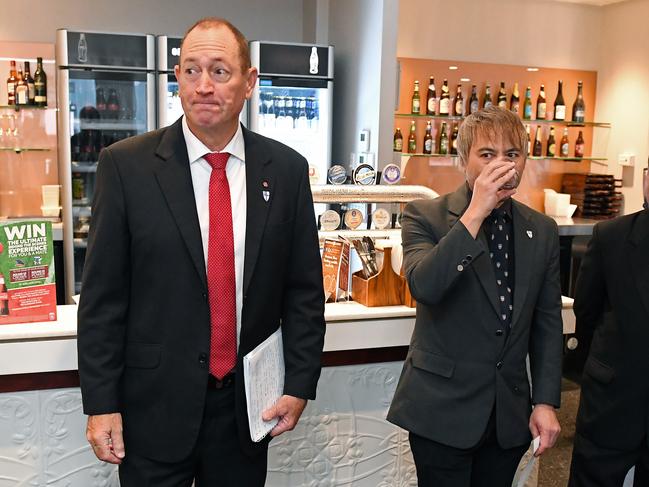
Voters have the power to stack the Senate with minor parties or independents as never before, yet while those particularly from the right may do well as overall national percentage, Senate spots will be hard to find.
Of the 36 senators not up for re-election, the base is already favoured to the right, with 18 (16 Coalition, Hanson for One Nation, and independent Cory Bernardi).
That compares to 13 incumbent ALP senators and three Greens.
South Australia’s Centre Alliance has said it would not support Labor on its key policies of removing franking credits, ending negative gearing on established properties or raising the tax rate for high-earning workers.
For the 40 spots up for grabs on Saturday (being 36 from the states and two each from the territories), some think Labor may not lose any places, though the Greens will. This suggests the right will control the Senate.
What does it mean for Palmer? If the Liberals were to win the lower house, they would not need Palmer’s support in a right-dominated Senate. Palmer would only be of theoretical use to a Labor government, but with his advertisements talking of “Shifty Shorten” it seems he won’t be helping them.
That means his vote won’t count. Has Clive Palmer just spent $60m making himself irrelevant?
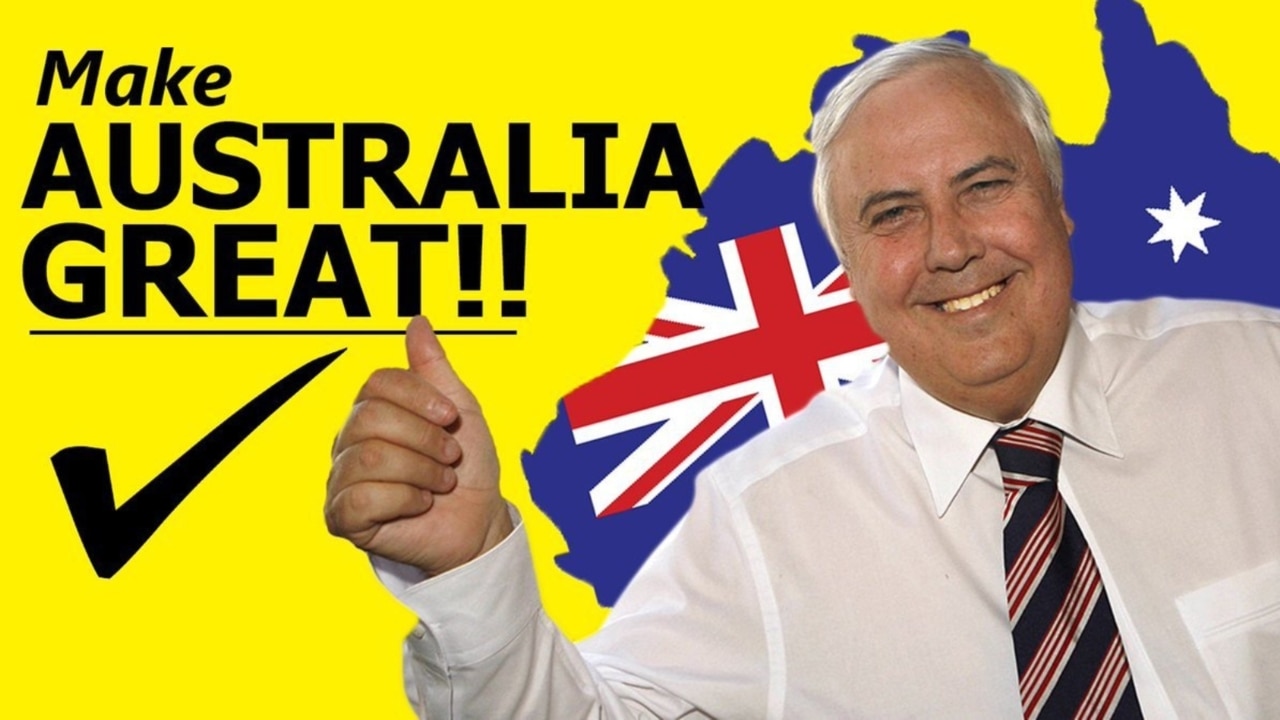
Nick Butterly, a journalist with The West Australian, has written that Palmer’s ambitions may have more to do with trying to create leverage in his ongoing court battles with Chinese-owned CITIC, which mines his Pilbara iron-ore leases and which has made Palmer a billionaire.
“Given a seat in parliament and the umbrella of parliamentary privilege, Palmer would almost certainly take the xenophobic rhetoric up another notch,” wrote Butterly.
If Butterly’s right, and he may well be, Palmer’s 2019 campaign is a personal vanity project about his personal income. And the $60m he has spent has been at the expense of his starry-eyed candidates, who matter nothing to him.
As creditors await their money, there’s one thing you can bank on: the cashed-up Palmer will this time turn his plans to build Titanic II from myth to reality. He’s going to need it to remind people he’s still around.
Mr Palmer declined to answer questions from News Corp Australia but his spokesman, Andrew Crook, texted to say he was engaging with the organisation. “Everyday page 2 and 3,” he messaged, referring to UAP’s colossus advertising campaign.
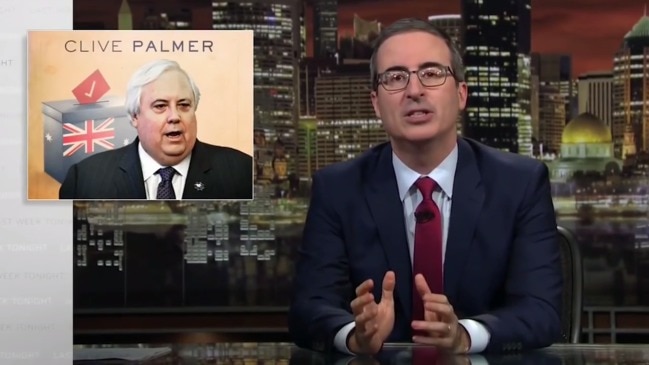
Originally published as Clive Palmer’s $60m Senate campaign looks shaky

